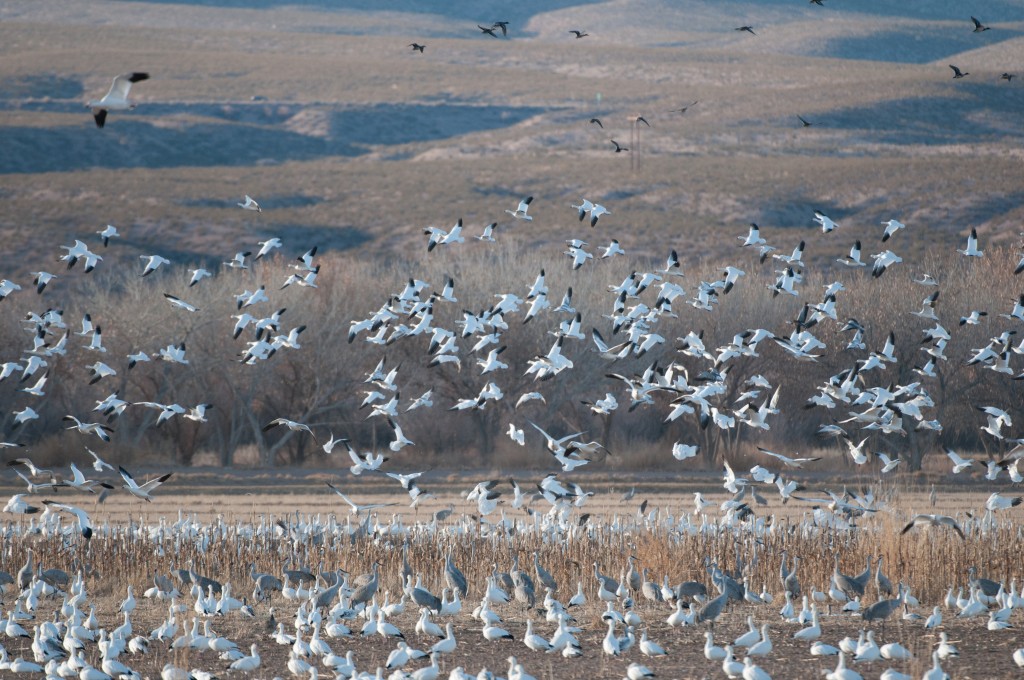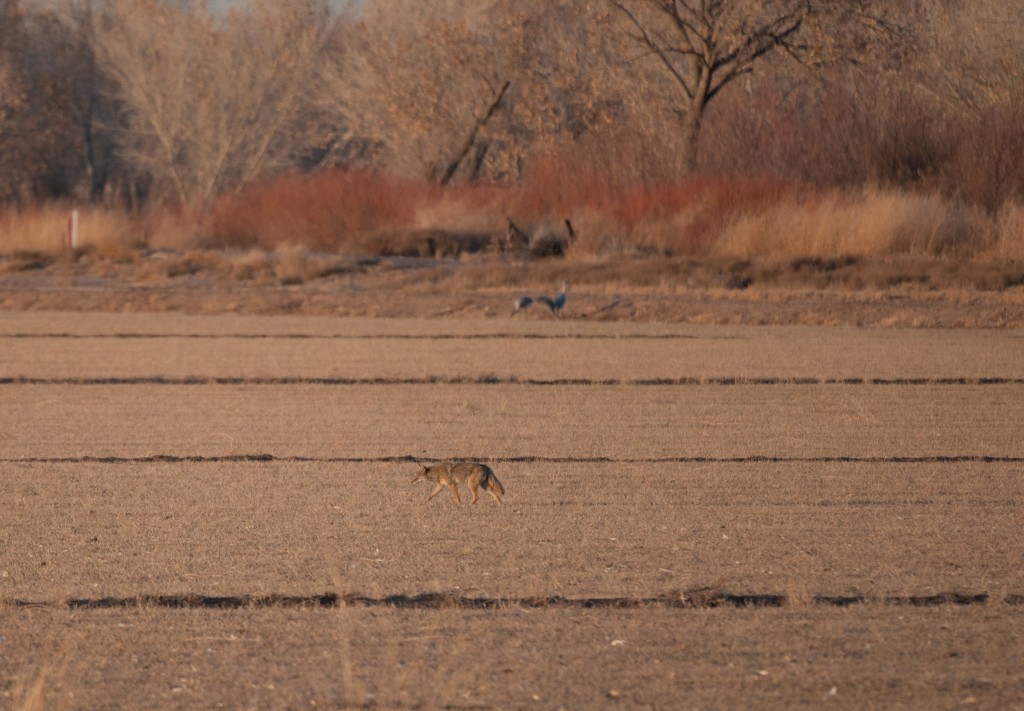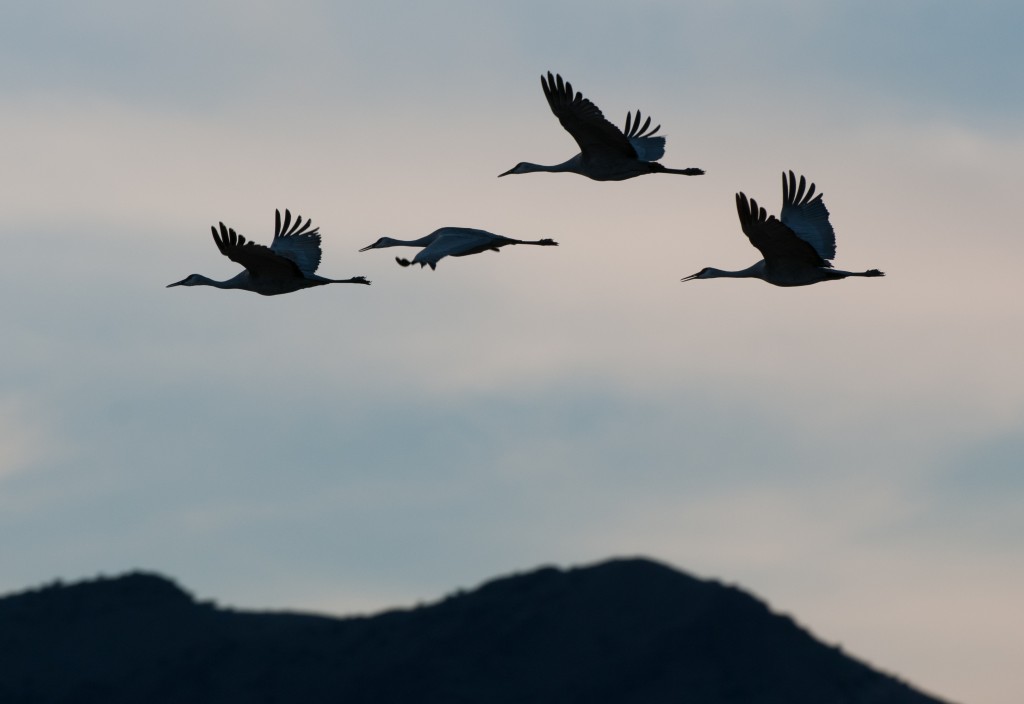The Bosque del Apache NWR is located in central New Mexico, a little over an hour’s drive south of Albuquerque, NM. It’s my favorite location for birding. Much of the effort in managing the refuge is for the benefit of Sandhill cranes, Snow geese and other waterfowl. In the winter months the refuge is home to tens of thousands of these birds. But like any other natural place, good habitat attracts a wide variety of birds and other wildlife.
Management of the refuge must be a fairly complicated matter. There are many different areas that are, or can be, flooded by use of irrigation channels. Parts of the preserve are dedicated to growing crops (corn) that will attract and provide food for the birds through the winter. And the refuge is constantly being inundated with invasive salt cedar which is battled with considerable effort and cost.
During the day a substantial number of the cranes and geese can be found in, or around the edges of, cornfields. The birds are generally somewhat hesitant to enter the cornfields because the coyotes can hide in the corn and ambush the birds as they feed, so the majority of the birds stand around the edges of the cornfields while some of the ones that are hungrier or bolder enter the standing corn for food. Throughout the winter portions of the cornfields are knocked down to provide food for the birds.
In the late afternoons the coyotes, which are mainly nocturnal, employ various tactics to make a meal off the birds. They skirt the flocks of birds in and around the corn fields looking for any that might be sick, injured or just not up to par on self-preservation. Although I’ve never seen a coyote take a bird you must assume it happens on a regular basis or else the coyotes wouldn’t spend the time or effort in their pursuit. While some coyotes appear to try to sneak up on the birds, others are fairly open concerning their intentions. In the photo posted below, this coyote is taking the direct approach to a cornfield but on the previous evening we watched for almost an hour as a coyote sought to hide in low cornfield stubble and ambush unwary birds.
Just before dark the cranes, geese and ducks fly in small groups to the relative safety of the shallow ponds that are scattered over the refuge, where they spend the night. The ponds often freeze over during the cold nights but offer some protection from the coyotes. The water probably provides some warning of coyotes’ approach and perhaps the coyotes are somewhat dissuaded from entering the water or venturing out on thin ice.
Each winter morning there occurs just before sunrise what is termed ‘the fly-off’. Within a very short period of time, sometimes measured in mere seconds, the thousands of birds that have over-nighted at the refuge rise together and fly off to feed in the various fields both on the preserve and on private land in the general area. This event attracts observers and photographers from all over the world.
And each and every day of the winter the cycle repeats itself.
You can learn more (and perhaps obtain more accurate information) about the Bosque del Apache National Wildlife Refuge, including their weekly bird count, by visiting these web sites:



